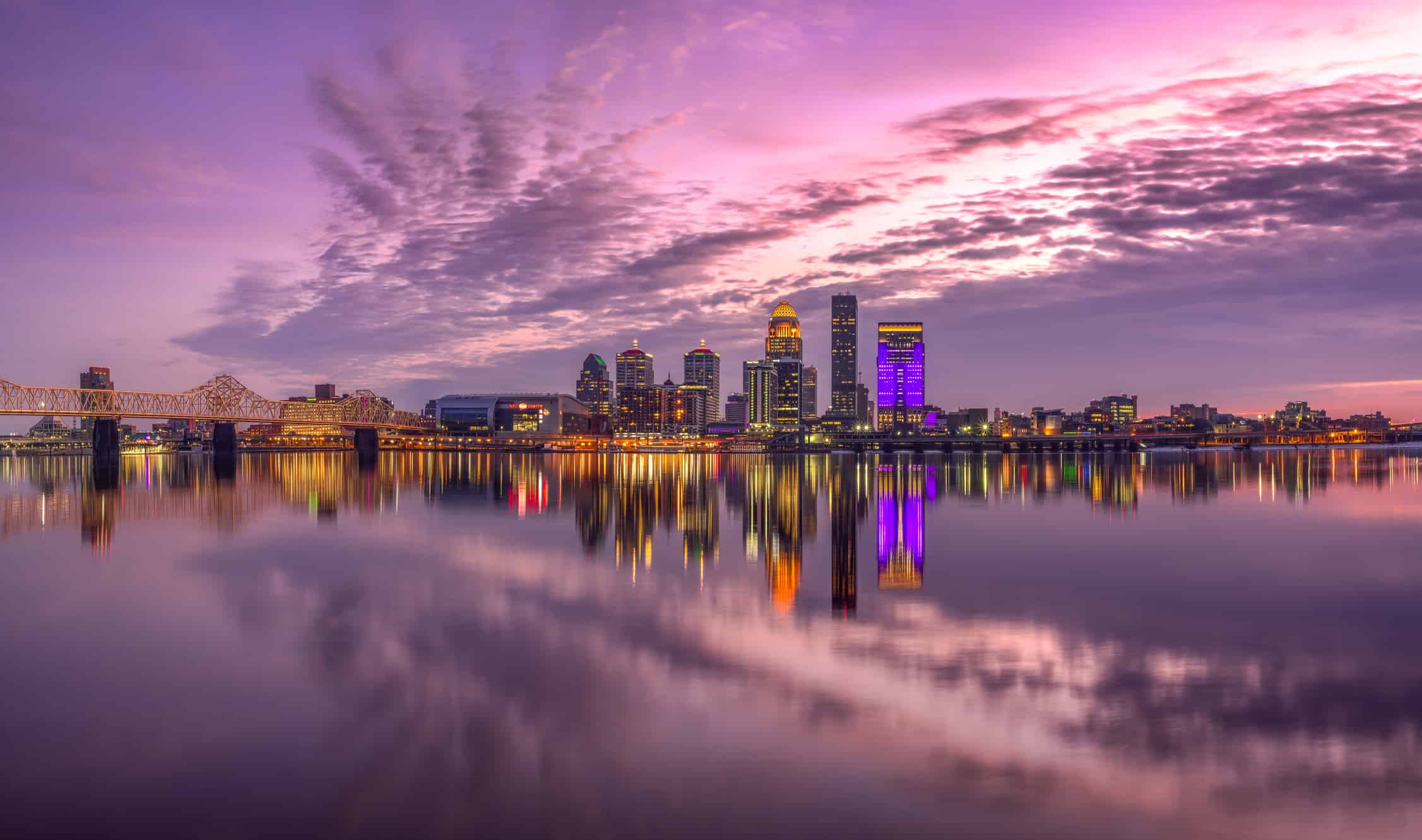Kentucky is in the east-south central region of the United States. This state, mainly rural, is home to over 5 million inhabitants and several large cities with strong economies. Keep reading to discover the largest cities in Kentucky, ranked by population, total area, and economic impact.
Largest Cities in Kentucky by Population
Kentucky is only the 26th state by population but still features some large cities.
| Rank | City | Population (2021) |
|---|---|---|
| 1 | Louisville | 628,594 |
| 2 | Lexington | 321,793 |
| 3 | Bowling Green | 73,529 |
| 4 | Owensboro | 60,011 |
| 5 | Covington | 40,837 |
Louisville
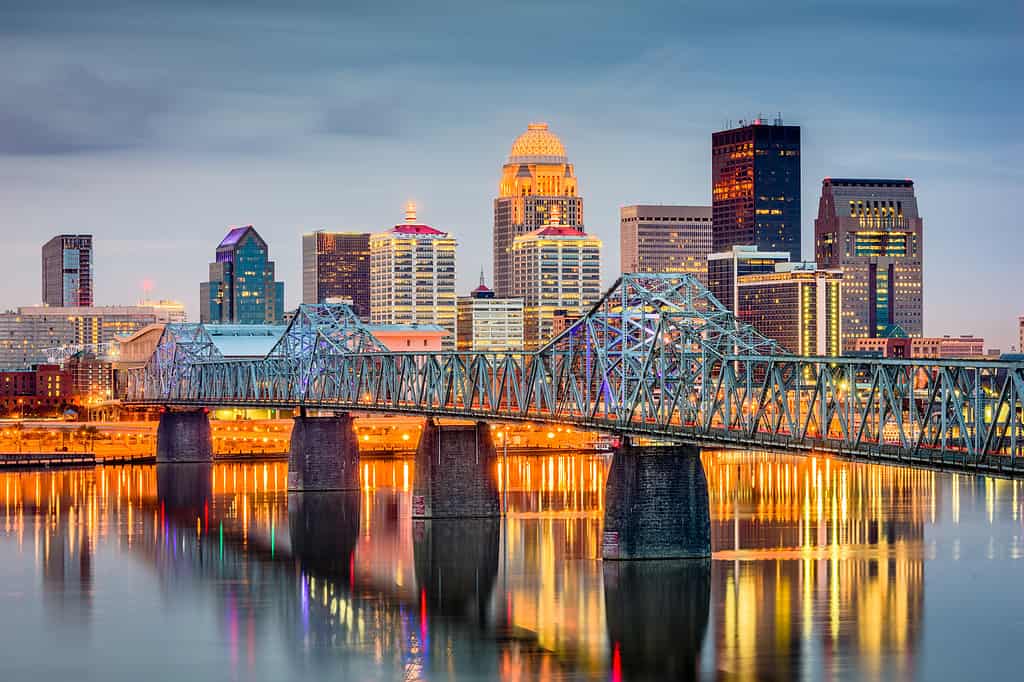
The city of Louisville was named after King Louis XVI of France.
©Sean Pavone/iStock via Getty Images
Louisville, often referred to as Louisville/Jefferson County due to its consolidated city-county government, is the largest city in Kentucky by population. This vibrant and historically significant city is located in the northeastern part of the state, along the banks of the Ohio River. Its strategic location played a crucial role in its growth and development.
With 628,594 inhabitants, Louisville is the largest city by population in Kentucky. The city’s population has steadily grown, fueled by a diversified economy, job opportunities, and a rich cultural scene. Between 2010 and 2020, Louisville’s population increased by 6%. Louisville’s population density is 1,900/sq mi. It is relatively moderate compared to some larger metropolitan areas in the United States. The city center and specific neighborhoods have higher population densities, while the outskirts are less densely populated.
Notable demographic trends in Louisville include its increasing racial and ethnic diversity. Like many cities across the United States, Louisville has seen a growth in its Hispanic and Asian populations in recent years. It also has a large student population with the University of Louisville.
Lexington
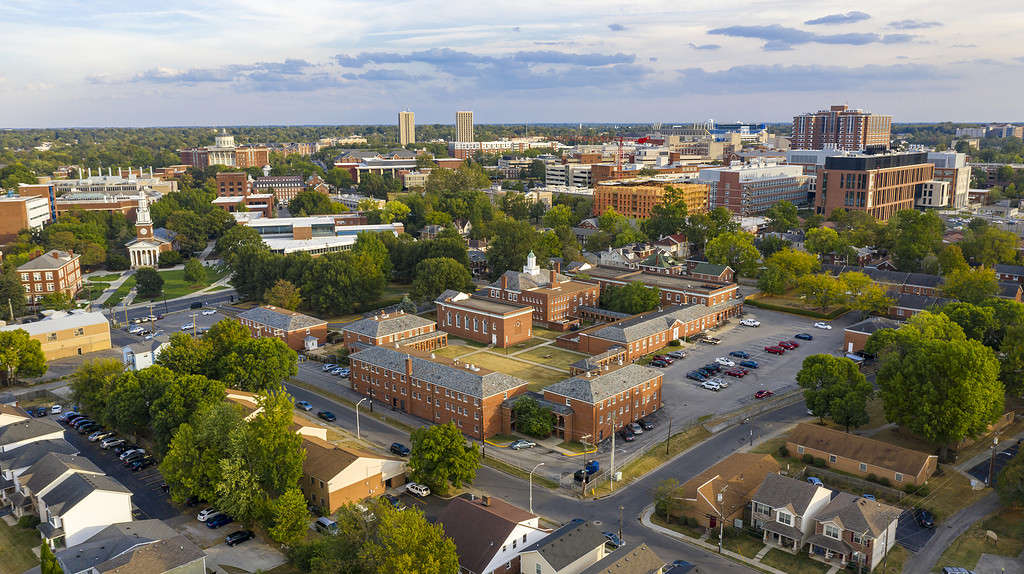
The iconic Mary Todd Lincoln House is in Lexington.
©ChrisBoswell/iStock via Getty Images
Lexington is a vibrant and historically significant city in the heart of the Bluegrass Region of the United States. The town is in the north-central part of the state, nestled amidst the rolling hills and lush pastures synonymous with the region. Its central location within Kentucky makes it a vital economic and cultural hub for the city and the state.
Lexington’s population is approximately 321,793 residents, making it the second-largest city in Kentucky after Louisville. Its population has steadily grown over the years, with an increase of 9% between 2010 and 2020. The city has an extensive land area, which results in a population density of 1,137.26/sq mi.
One notable demographic trend in Lexington is its diverse and educated population. The city has several higher education institutions, most notably the University of Kentucky. This university has more than 20,000 students, adding a lot of younger inhabitants to the city.
Bowling Green
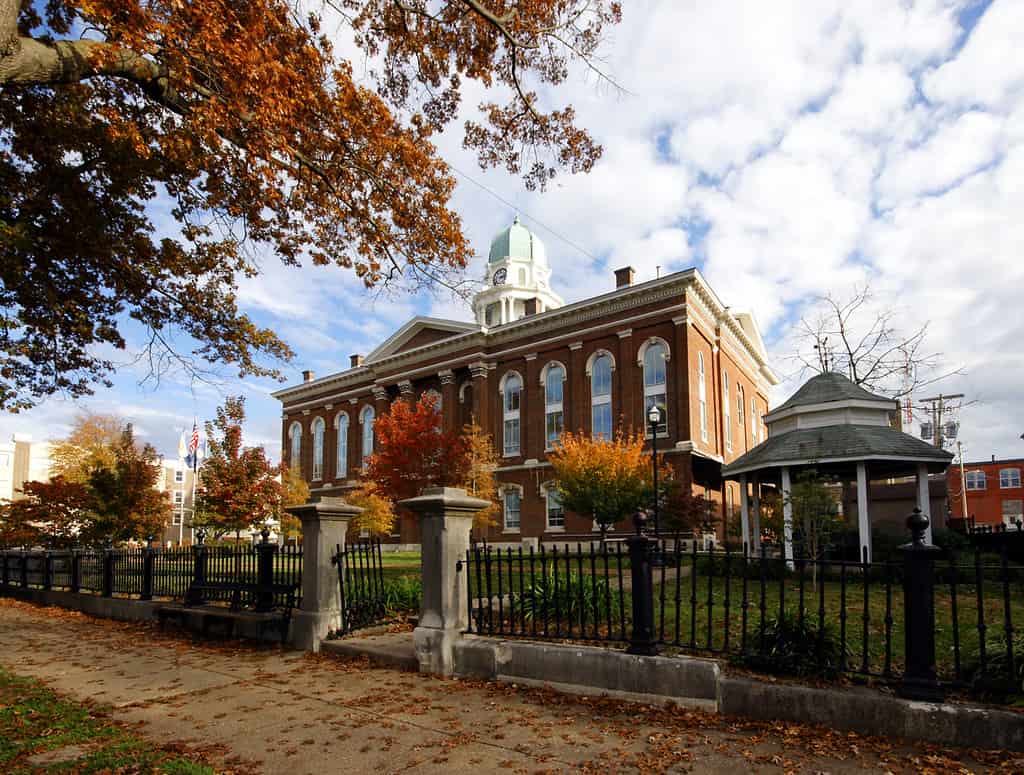
Bowling Green houses the Warren County Courthouse.
©BOB WESTON/iStock via Getty Images
This city is a vibrant and historical town, located 65 miles north of Nashville, TN, and 110 miles south of Louisville. It also serves as the county seat of Warren County and is known for its strategic location, making the city a hub for commerce and education.
Bowling Green has a population of 73,529, the third-largest in Kentucky. Thanks to a robust economy, the population is steadily increasing. Since 2010, it increased by 24.5%, one of the most significant percentages in the entire state. Bowling Green’s population density is moderate at 1,789.81/sq mi.
The city experiences a growing international community. Bowling Green has seen increased residents from various countries attracted by educational opportunities, a welcoming community, and a diverse job market. This trend has contributed to the city’s cultural richness, with a wide range of international restaurants, events, and organizations.
Like Lexington, the city is also home to thousands of students from Western Kentucky University and others. The university attracts students from different parts of the country and the world, contributing to the city’s youthful and dynamic population.
Owensboro
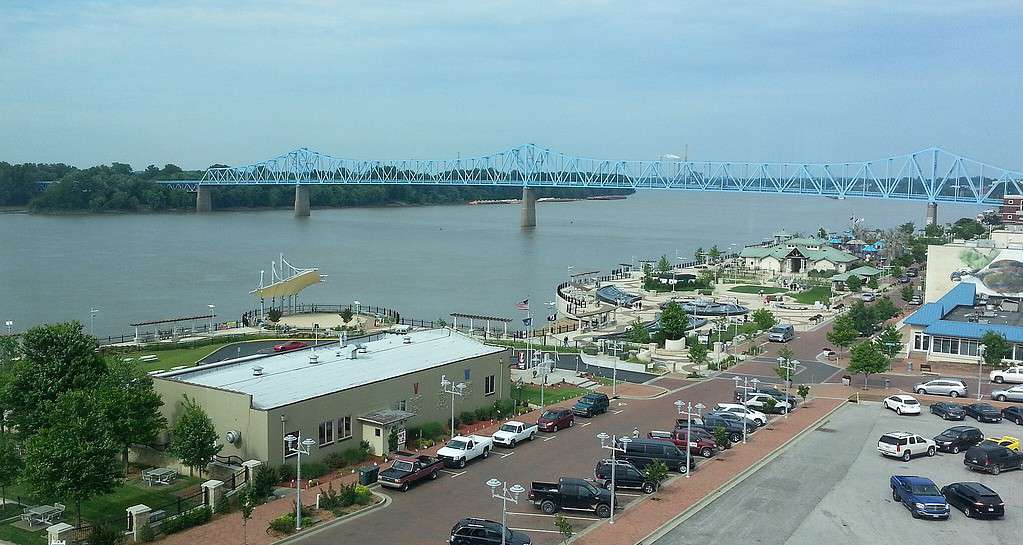
The city’s first name was “Yellow Banks” in reference to the color of the land beside the Ohio River.
Owensboro is a charming city located in the western part of the state of Kentucky. Nestled along the banks of the Ohio River, Owensboro enjoys a picturesque setting that combines the beauty of rolling hills and the serenity of the river. The city’s location along the Ohio River immensely helped its development.
Around 60,011 people live in Owensboro, making it the fourth-largest city in Kentucky. The city has experienced steady population growth over the years, primarily attributed to its strong economy, affordable cost of living, and quality of life. It increased by 5.1% from 2010 to 2020. In terms of population density, Owenboro’s is higher than other large cities in the state, with 2,914.15/sq mi.
Covington
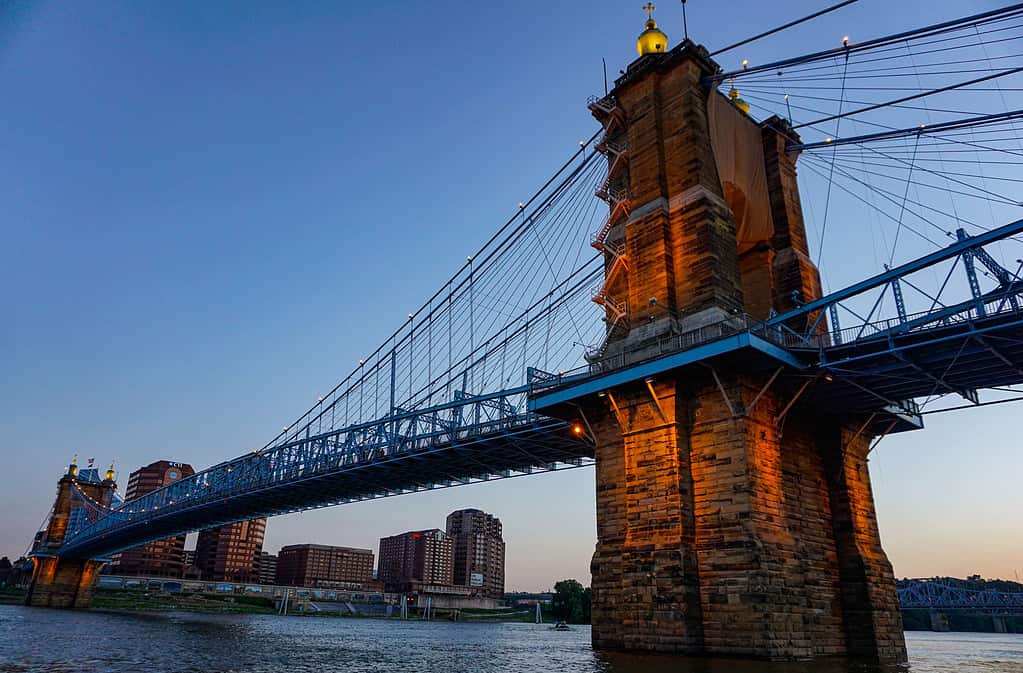
The John A. Roebling Suspension Bridge crosses the Ohio River between Cincinnati and Covington.
©Wirestock/iStock via Getty Images
Covington is located in the northern part of the state, nestled along the banks of the Ohio River. It is part of the Cincinnati-Middletown Metropolitan Statistical Area, often called the Greater Cincinnati area. This city is also just across the river from downtown Cincinnati, Ohio.
Covington is home to 40,837 people. Even though this number may seem small, Covington is the fifth-largest city in the state. Covington’s population growth is minimal. In the last decade, from 2010 to 2020, it only increased by 0.8%. Its population density is also way higher than other large cities in Kentucky, with 3,103.81/sq mi.
Its proximity to Cincinnati has made it an attractive option for commuters who work in the neighboring city but prefer to reside in Kentucky. Additionally, Covington has a diverse population, with residents of various backgrounds and ethnicities. This diversity is reflected in the city’s cultural events, festivals, and culinary offerings, making it a dynamic and inclusive community.
Largest Cities in Kentucky by Total Area
Kentucky ranks as the 37th biggest state in the country. Some of its cities boast extensive land area.
| Rank | City | Total Area (Square Miles) |
|---|---|---|
| 1 | Louisville | 341.4 |
| 2 | Lexington | 285.5 |
| 3 | Bowling Green | 40.7 |
| 4 | Hopkinsville | 32 |
| 5 | Elizabethtown | 28 |
Louisville
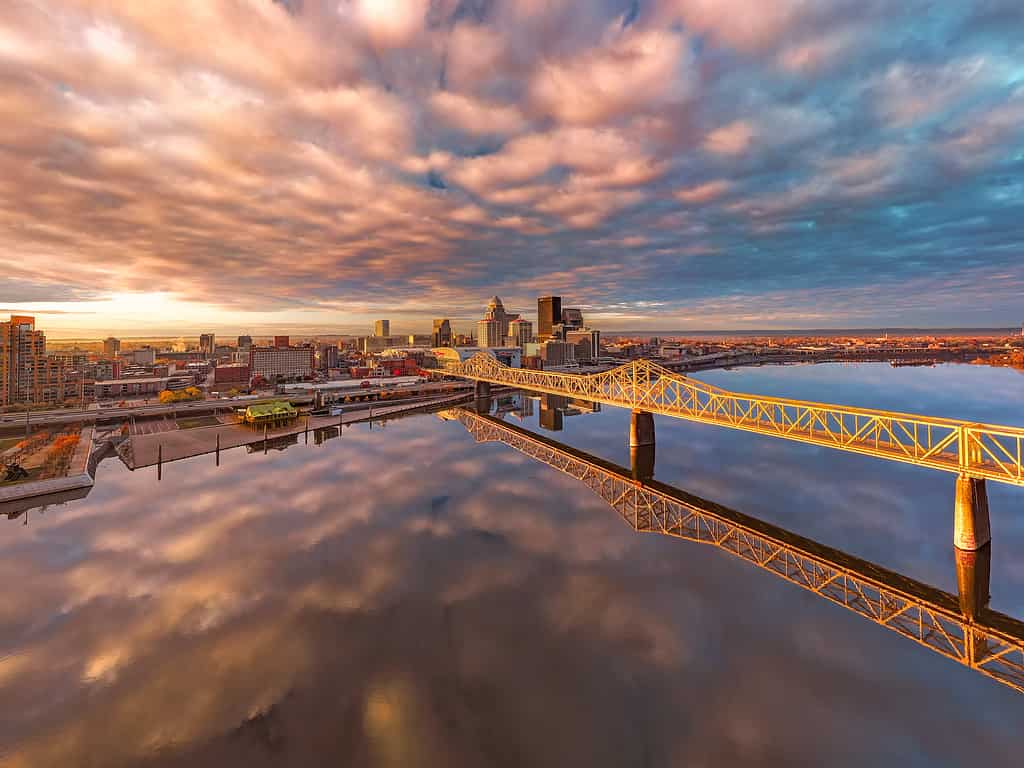
Louisville is also the 15th largest city in the country by area.
©Wirestock/iStock via Getty Images
As the state’s largest city by total area, Louisville is also the 15th largest city in the United States with 341.4 square miles (884.2 square kilometers). Located along the Ohio River, the riverfront area offers stunning water views. Additionally, the city is characterized by gently rolling hills and valleys, which contribute to its scenic beauty.
Louisville experiences a humid subtropical climate with distinct seasons. Summers are typically warm and humid, with average temperatures in the 80s and 90s Fahrenheit. Winters are relatively mild, with average highs in the 40s and 50s. Residents and visitors can enjoy a variety of outdoor activities throughout the year.
One of the notable natural attractions in Louisville is the Louisville Waterfront Park, a beautifully landscaped park along the Ohio River. The park offers walking and biking trails, green spaces for picnics, and a playground for children. Waterfront Park also hosts various events and festivals throughout the year. The proximity to the river is excellent for recreational activities such as boating and fishing. Swimming is not recommended as there are concerns for water quality, strong currents, and potential submerged debris.
Cherokee Park is an urban oasis designed by the landscape architect Frederick Law Olmsted. It features hiking and biking trails, a scenic loop road for leisurely drives, and a large lake for fishing and paddle boating. The park’s lush vegetation and well-maintained landscapes make it a popular spot for outdoor enthusiasts and nature lovers.
In addition to these natural attractions, Louisville is also known for its cultural and historical landmarks, such as the Louisville Mega Cavern and the Louisville Slugger Museum & Factory. The Churchill Downs are home to the famous Kentucky Derby, one of the most famous horse races in the world.
Lexington
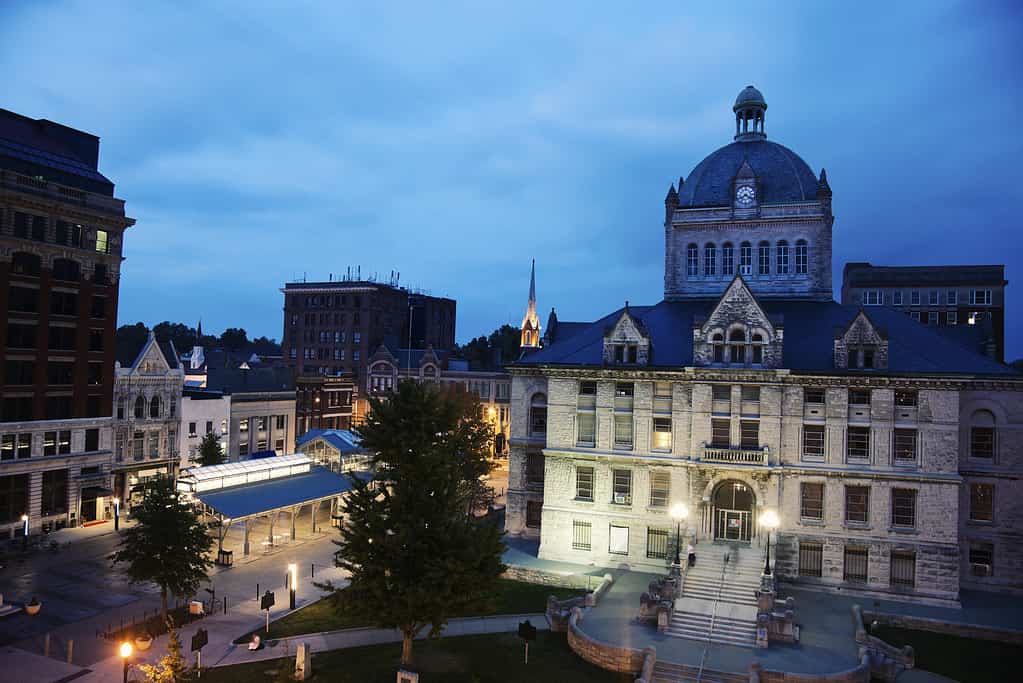
Lexington is also known as the “Athens of the West.”
©benkrut/iStock via Getty Images
The city of Lexington is famous for its scenic beauty, rich cultural heritage, and equestrian tradition. With its 285.5 square miles (739.4 square kilometers), it is the second-largest city by total area as well as population. The city’s landscape is marked by horse farms, nicknamed “Horse Capital of the World.” These picturesque farms are home to some of the world’s most famous thoroughbred horses.
The climate in Lexington is humid subtropical, with hot summers and relatively mild winters. Summers are typically warm and humid, with temperatures often exceeding 85°F. Winters are relatively mild, with occasional snowfall.
One of Lexington resident’s favorites is the Kentucky Horse Park, a sprawling 1,200-acre facility dedicated to the history and care of horses. It showcases the state’s equestrian heritage and houses various breeds of horses. The park also hosts events, shows, and museums that provide insights into the world of horse racing and breeding.
Another natural gem in Lexington is the Raven Run Nature Sanctuary. Located on the city’s outskirts, this 734-acre nature preserve offers miles of hiking trails, showcasing the region’s native flora and fauna. Visitors can explore hardwood forests, meadows, and the scenic Kentucky River Palisades.
In addition to these attractions, Lexington is home to Keeneland Race Course. This famous horse racing track hosts prestigious thoroughbred races in the spring and fall. Visitors can experience the thrill of horse racing while enjoying the stunning architecture and landscaped grounds.
Bowling Green

The city has a charming downtown that attracts visitors.
Located in the picturesque southwest of Kentucky, Bowling Green, with its 40.7 square miles (105.4 square kilometers), is the third-largest city by total area. The city is nestled within the rolling terrain of the Barrens. This distinct geological and ecological region is characterized by its unique grassy plains and diverse flora and fauna.
Bowling Green experiences a humid subtropical climate with four distinct seasons. Summers are typically warm and humid, with temperatures often reaching the 90s (°F), while winters are relatively mild, with temperatures seldom falling below freezing. Spring and autumn are enjoyable, showcasing the area’s natural beauty as flowers bloom and leaves change colors.
In the city itself, visitors can explore the Lost River Cave. This unique geological feature allows visitors to take a boat tour through an underground cave system. The Lost River Cave also boasts scenic walking trails, a butterfly habitat, and educational programs.
Outside of the city, to the North, is the Mammoth Cave National Park. This park is home to the world’s longest cave system, featuring underground chambers and passages. Visitors can explore the cave on guided tours and enjoy hiking, picnicking, and watching wildlife in the surrounding forested areas.
If you prefer water-based activities, Bowling Green has everything you need. Outside of the city is the Barren River Lake State Resort Park. This state park offers a beautiful lake, scenic trails, camping facilities, and a golf course. Visitors can enjoy fishing, boating, swimming, and picnicking while taking in the area’s natural beauty.
It is also known for its vibrant arts scene, historic downtown area, and the home of the National Corvette Museum, celebrating the iconic American sports car.
Hopkinsville
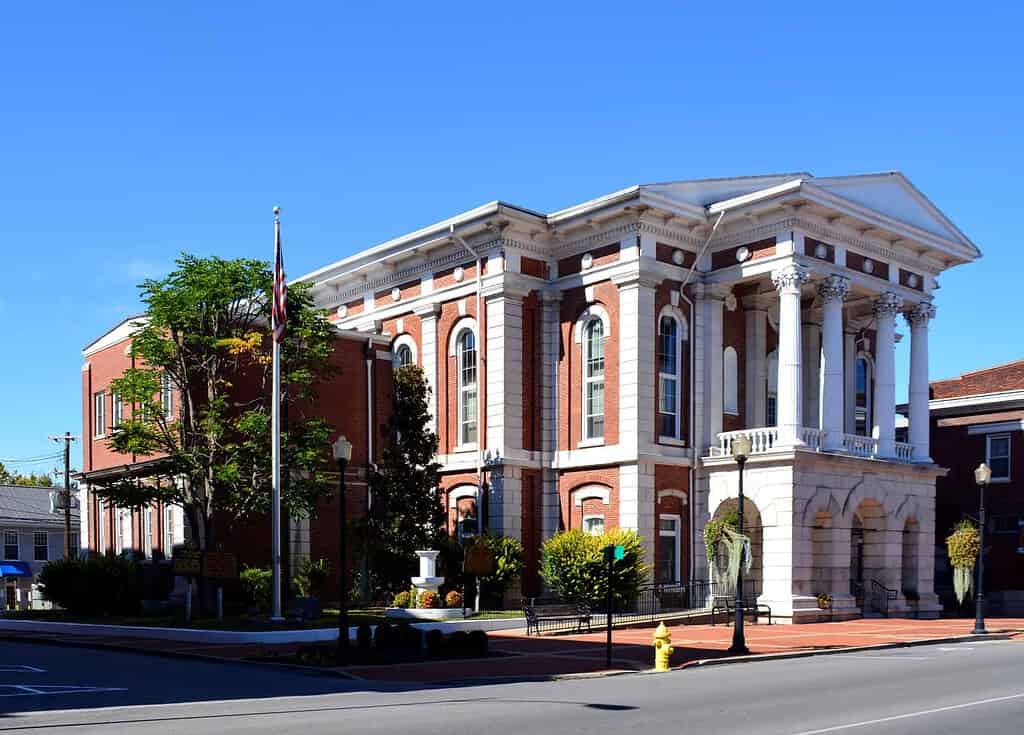
The Christian County Courthouse is in Hopkinsville, KY.
©BOB WESTON/iStock via Getty Images
Hopkinsville is a charming city in the western part of the state. Boasting 32 square miles (82.8 square kilometers) of total area, it is the fourth-largest city by total area. Situated in Christian County, Hopkinsville is often called the “City of Festivals” due to its vibrant community events and welcoming atmosphere.
Geographically, Hopkinsville is in the heart of the Pennyroyal Plateau, a region characterized by rolling hills, fertile farmland, and rich limestone soil. The city is part of the western coalfields of Kentucky, making it historically significant in terms of mining and agriculture. The surrounding landscape showcases the picturesque beauty of rural Kentucky, with farms and fields stretching out in all directions.
The climate in Hopkinsville is humid subtropical, with four distinct seasons. Summers are typically warm and humid, with temperatures often reaching the 90s (°F), making it an excellent time for outdoor activities. Winters are relatively mild, with temperatures hovering around freezing and occasional snowfall. Spring and fall bring mild and pleasant weather.
Near Hopkinsville is the nearby Pennyrile State Forest and State Resort Park. Covering over 15,000 acres, this natural oasis offers hiking, camping, bird-watching, and horseback riding opportunities. The park also features the picturesque Pennyrile Lake, perfect for boating and fishing.
Hopkinsville is also known as a prime location for stargazers and astronomers. On August 21, 2017, the city was entirely in the path of totality during the solar eclipse. Thousands of visitors flocked to the city to witness this rare celestial event.
The city annually hosts numerous festivals and events, celebrating its heritage and diversity. These events include the annual Hopkinsville International Festival, the Little River Days Festival, and the Western Kentucky State Fair.
Elizabethtown
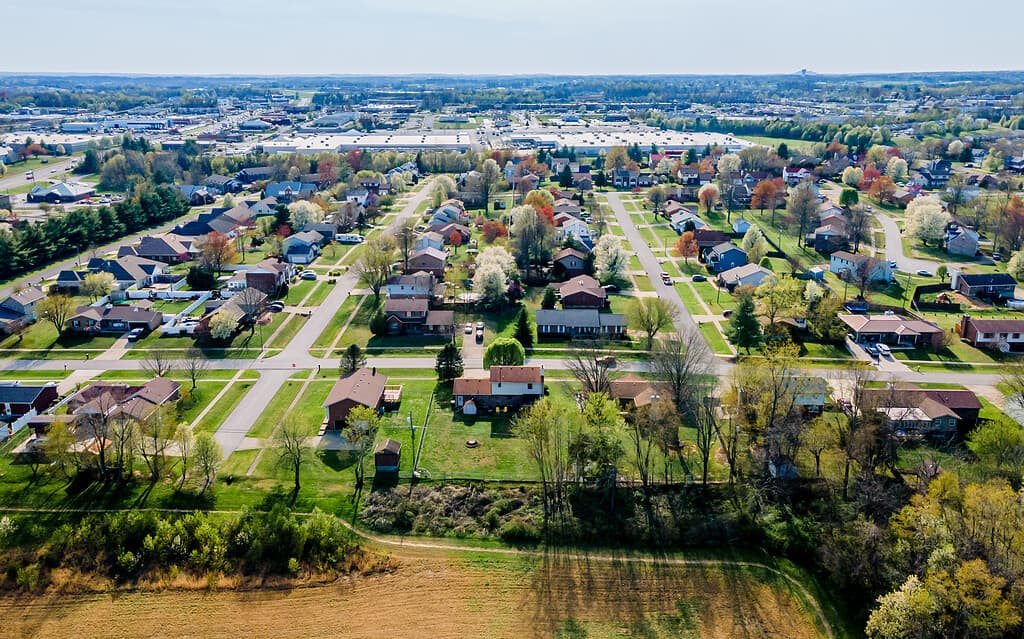
Andrew Hynes, founder of Elizabethtown, named the city after his wife.
©Brian Koellish/iStock via Getty Images
Elizabethtown is a charming city located in the central part of the state, serving as the county seat of Hardin County. The city is the fifth-largest in Kentucky with 28 square miles (72.6 square kilometers) of total area. Situated approximately 45 miles (72.4 kilometers) south of Louisville, Elizabethtown enjoys a prime location within the Bluegrass Region of Kentucky, with its gently rolling hills and fertile farmland.
Like the others, the climate is humid subtropical, with warm summers and cool winters. Residents can experience all four seasons, from the vibrant fall foliage colors to occasional winter snowfall. Summers in Elizabethtown can be warm and humid, while the winters are relatively mild.
The city features Freeman Lake, a 170-acre reservoir within the city limits. The lake offers fishing, boating, picnicking, and hiking opportunities around its scenic trails. It’s a popular spot for locals and visitors to relax and enjoy the great outdoors. The nearby Bernheim Arboretum and Research Forest also provides a vast expanse of natural beauty, with hiking trails, educational programs, and a beautiful landscape filled with native flora and fauna.
Elizabethtown is known for its vibrant community and strong sense of civic pride. The city hosts numerous events and festivals annually, bringing residents together to celebrate their culture and heritage.
Largest Cities in Kentucky by Economic Impact
| Rank | City | Gross Domestic Product (GDP) in 2021 |
|---|---|---|
| 1 | Louisville-Jefferson County | 68,748 million |
| 2 | Lexington-Fayette | 32,852 million |
| 3 | Bowling Green | 8,368 million |
Louisville
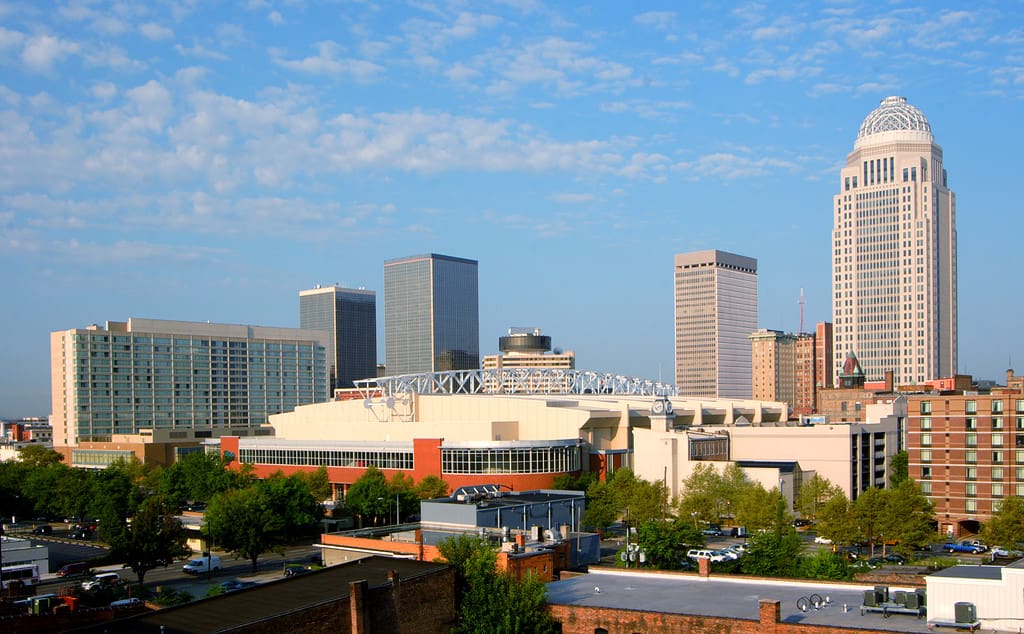
Louisville bases its economy on healthcare, logistics, and manufacturing.
©BonuraPhoto/iStock via Getty Images
As the largest city by population and area, it is no surprise that Louisville has the most economic impact in Kentucky. Louisville serves as the state’s economic, cultural, and educational hub.
It holds the largest GDP in Kentucky, with 68,748 million in 2021, thanks to its strong economy, key industries, and large employers.
Healthcare and Life Sciences
Louisville is home to several prominent healthcare and medical research institutions. The healthcare sector is a significant driver of the local economy.
The city houses the headquarters of Humana, one of the largest health insurance companies in the United States. Humana is one of the largest employers in the city, as well as Norton Healthcare.
Logistics and Distribution
Louisville’s strategic location along the Ohio River and proximity to major interstates has made it a central hub for logistics and distribution. The city is best known for being the home of the worldwide air shipping giant United Parcel Service (UPS), which has a significant air hub at Louisville International Airport. UPS employs thousands of people at its airport hub.
Manufacturing
Manufacturing has long been a crucial industry in Louisville. The city produces many goods, including automobiles, appliances, and industrial equipment. Companies like Ford, GE Appliances, and General Electric have a significant presence in the area.
The Louisville Assembly Plant, which produces Ford Escape and Lincoln Corsair vehicles, is one of the city’s key manufacturing facilities.
Education and Research
Louisville has a strong presence in education and research, with institutions like the University of Louisville contributing to the local economy. These institutions foster innovation and contribute to the growth of the technology sector.
The city invests in education and workforce development programs to ensure residents have the skills needed for future jobs, including those in healthcare, technology, and logistics.
The University of Louisville is one of the largest employers in the city.
Other Industries
Louisville is also home to Papa John’s headquarters. It developed a small tourism industry in recent years, largely thanks to the Kentucky Derby.
Lexington
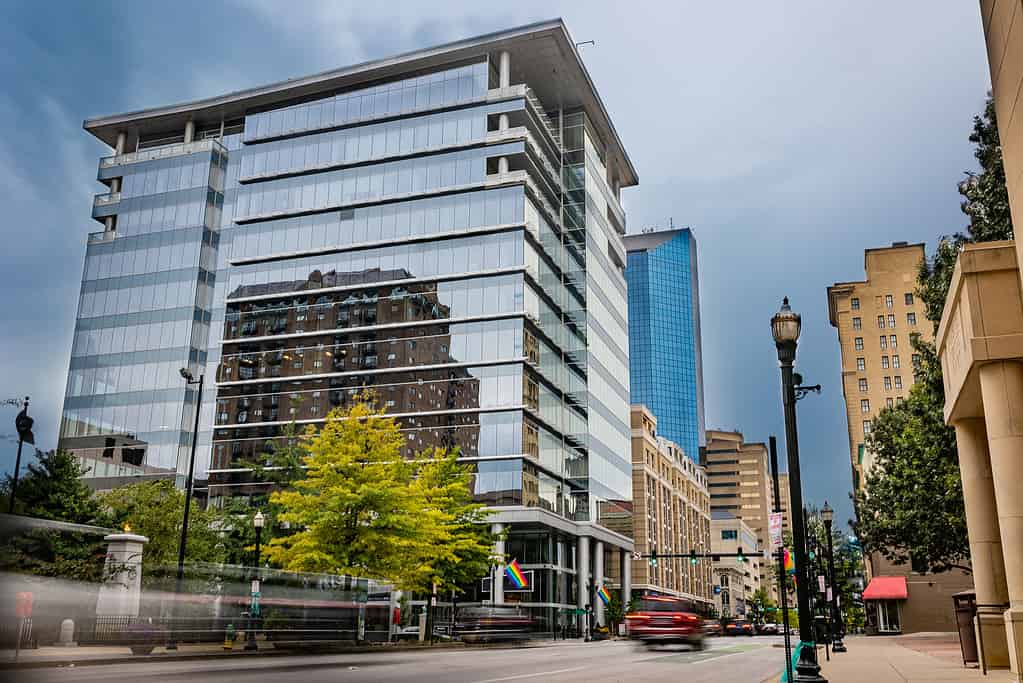
Alongside the horse industry, the healthcare and technology sectors are growing.
©Ivelin Denev/iStock via Getty Images
Lexington-Fayette, often called Lexington, is the second city in Kentucky with the biggest GDP. It was 32,852 million in 2021.
Horse Industry
Lexington, also called the “Horse Capital of the World,” is famous for its thoroughbred horse breeding and racing industry. The city has numerous horse farms, racetracks, and equine-related businesses. Lexington’s unique status draws tourists from around the globe. The city benefits from the tourism dollars spent on thoroughbred racing, horse farms, and related attractions.
As a significant player in the horse racing industry, Keeneland provides racing, hospitality, and event management jobs.
Education and Healthcare
Lexington boasts a robust education and healthcare sector. The healthcare industry is well-represented with the University of Kentucky Medical Center and several other medical facilities.
The University of Kentucky and Transylvania University are major educational institutions. The university is a hub for education and a significant employer, providing jobs in various fields, from academia to administration.
Bluegrass Community and Technical College is also a large employer in Lexington, offering jobs in the education sector.
Technology and Manufacturing
Lexington has been diversifying its economy, with technology and manufacturing playing an increasingly significant role. Companies in these sectors have been drawn to the city due to its skilled workforce and favorable business environment.
A global technology company, Lexmark International, is headquartered in Lexington and specializes in printing and imaging solutions.
Located just outside Lexington in Georgetown, Toyota’s manufacturing facility is one of the largest employers in the region, producing vehicles and employing thousands of people.
Agriculture
Besides the horse industry, agriculture, including crops like tobacco, corn, and soybeans, is essential to Lexington’s economy. The region is known for its fertile soil and agricultural traditions.
Bowling Green

Bowling has an extensive automobile industry.
©ChrisBoswell/iStock via Getty Images
With a GDP of 8,368 million, Bowling Green is largely behind Louisville and Lexington. However, for a city of over 73 thousand inhabitants, it showcases a strong economy.
Bowling Green’s economy is tied to manufacturing, particularly the automotive industry. The presence of the General Motors Bowling Green Assembly Plant, where Chevrolet Corvettes are produced, is a crucial driver of employment and economic growth in the region.
Thank you for reading! Have some feedback for us? Contact the AZ Animals editorial team.

